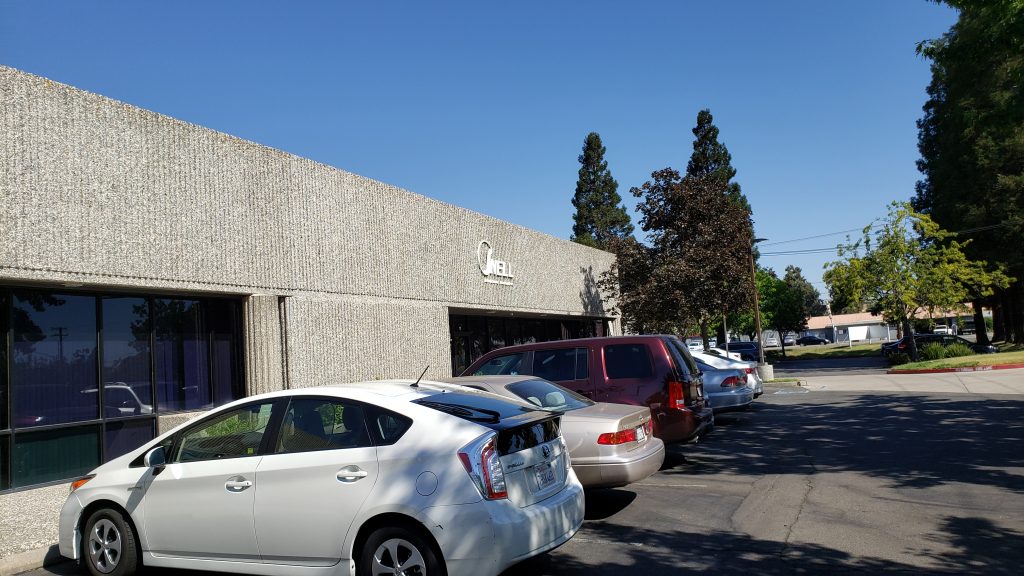
Last Thursday I hopped an early-evening flight to Sacramento, CA with my friend and fellow-creator, Jim Pruner. We were heading to the Snell Memorial Foundation headquarters to answer a few questions that I, and many other riders, have about their helmet safety standards, what they mean, and how they compare to the latest DOT and ECE standards.
We have some upcoming articles for webBikeWorld that are focused around helmet safety, and given the nature of the subject matter, we want to make sure that the information we provide is accurate. And what better way to do that than to engage the foremost third-party authority on the subject?
I have two big questions I personally want answered: first, are Snell-certified helmets really safer (and if so, by how much)? Second, are they worth the premium that they are often priced at?
We’re making the trip because we want to learn the answers from Snell first-hand. Equally as important, we want to observe how Snell tests helmets and see for ourselves the level of precision and objectivity that makes up the world’s most famous third-party helmet standard.
Why We Flew Two Canadians 1,503 KM from Calgary to Sacramento
Our society has undergone a transformative shift in how content is created, curated, and consumed. It’s never been easier to build a niche website or social media property that you can use to amplify your voice and influence.
It’s also never been easier to create content. And, as I think we are all learning, not all content is created equally. More than ever, you really can’t trust everything that you read, listen to, or watch.
My mentor, Nick Dellis, and I spend a lot of time talking about how we can create the best content in our verticals. Foundational to our approach is investing in content that builds our expertise and helps us earn a reputation for being honest and unbiased.
It’s important to us that our audience knows that they can trust what we say and create. We also concluded that if we wanted to be able to provide meaningful opinions/recommendations on helmets and helmet safety, then we need to really understand what makes a helmet safe.
Nick and I figured that the best way to accomplish the above was to fly a couple of Canadians 1,500km so that they could destroy some helmets in the name of knowledge.
As it Turns Out, I Suck at Planning
It’s 9:15 am in scorching-hot Sacramento, CA. My failure to properly plan for this trip meant that, after checking out of our almost-but-not-quite-a-dive hotel, I was now walking 2 km to the Snell office.
In cheap sandals, while carrying a 30lb bag, and with a backpack full of camera gear.
I’m also carrying a hot coffee, because that’s apparently what I wanted to drink while walking next to a six-lane highway in 39°C / 102.2°F weather.
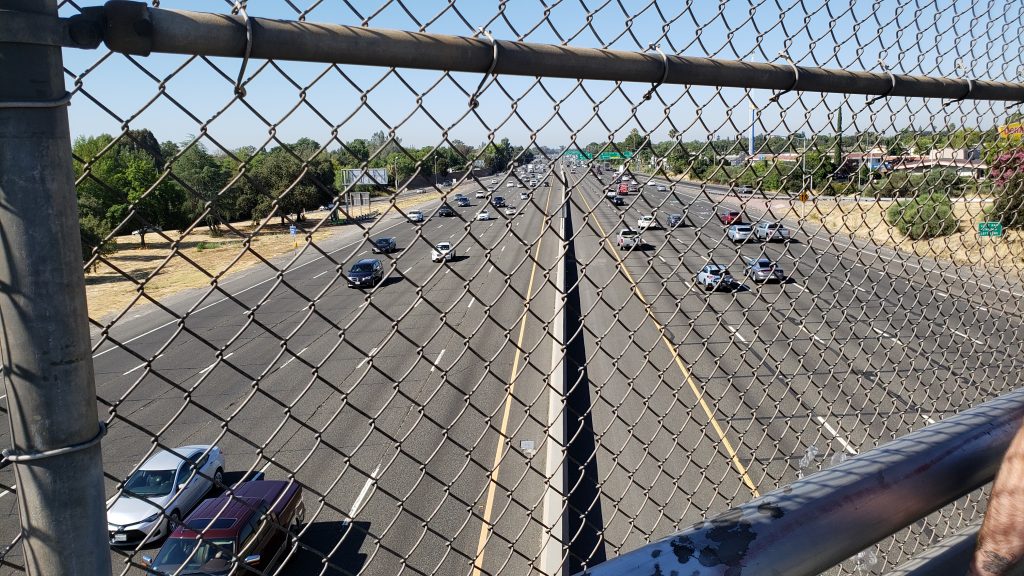
And it wasn’t even very good coffee. 🙁
The walk itself was uneventful and, despite my underwhelming choice in footwear, we arrived at Snell’s headquarters shortly after 10 am.
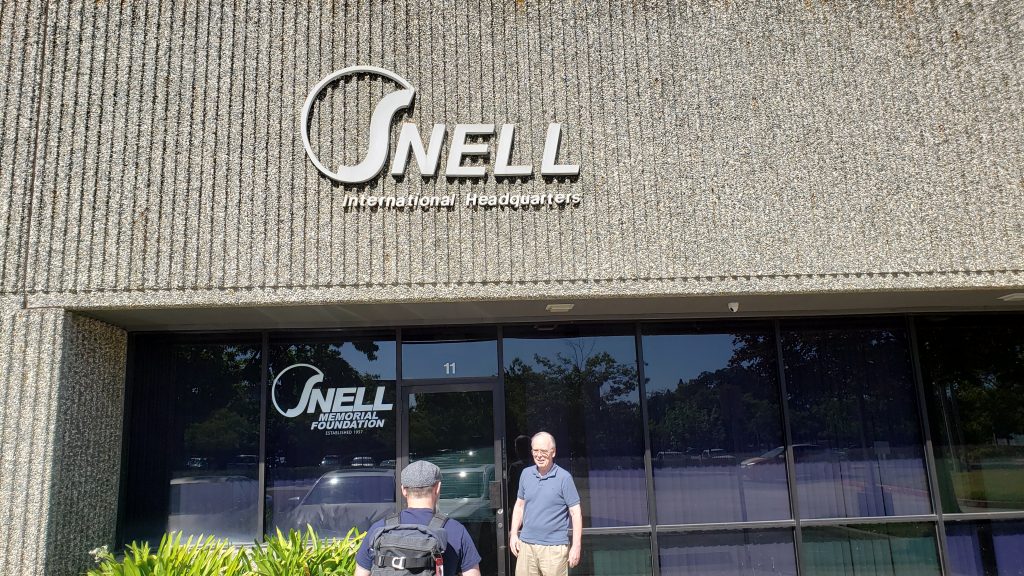
We were both ready to bask in the glory that is air conditioning (and to learn a whole lot about what makes helmets safe).
Learning From Experience
The Snell Memorial Foundation was formed in 1957 and has defined perhaps the world’s prominent independent helmet standard.
Over the years they have been instrumental in driving the industry forward. They continuously refine their standard, and in the past 20 years have updated the standard three times. The current standard, M2015, is about to be replaced by the upcoming M2020.
As they’ve updated the standard, they’ve gotten more stringent with impact tolerances and energy transfer. The testing line – how low in the helmet they may strike or assess – has also gotten lower.
Changes to their standard push helmet manufacturers to design better materials, shells, and liners. They also make helmets as a whole safer.
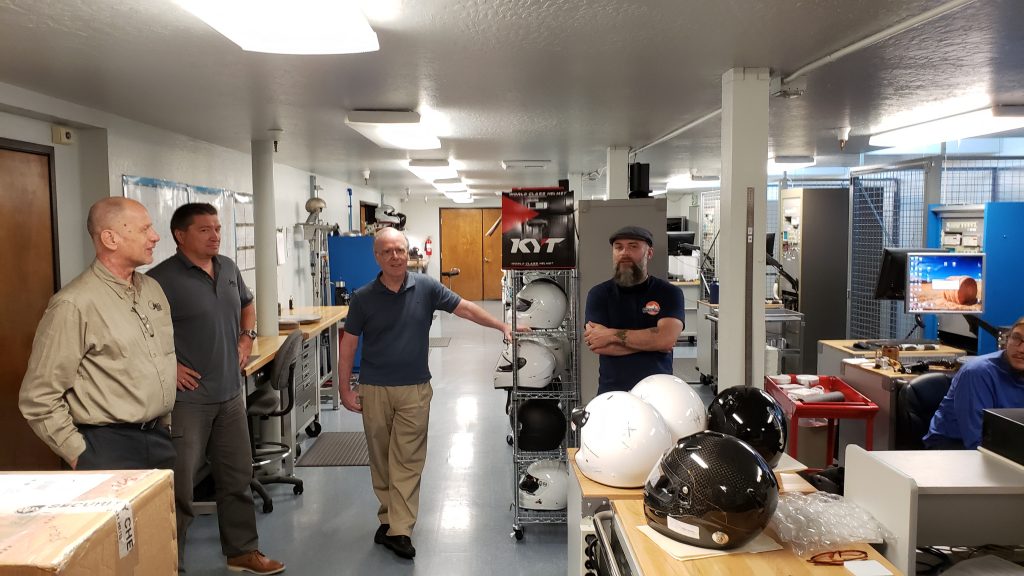
Jim and I spent 45 minutes chatting about helmet safety with the key players at Snell. I felt very lucky- we had nearly the entire team at Snell to ourselves for almost five hours! Along for the ride was:
- Ed Becker, Executive Director
- Steve Johnson, Administrative Director & Laboratory Manager
- Hong Zhang, Senior Program Director (& the Public Face of Snell)
- Tanner Morrow, Testing Technician
During the conversation, we talked at length about the factors that influence helmet safety, how riders can ensure their helmets are safe, and which helmets are safe and worth investing in.
“The best helmet to buy is the one that fits you the best, is DOT/ECE/Snell certified, and is comfortable to wear for long periods of time.”
Hong Zhang, Senior Program Director @ Snell Memorial Foundation
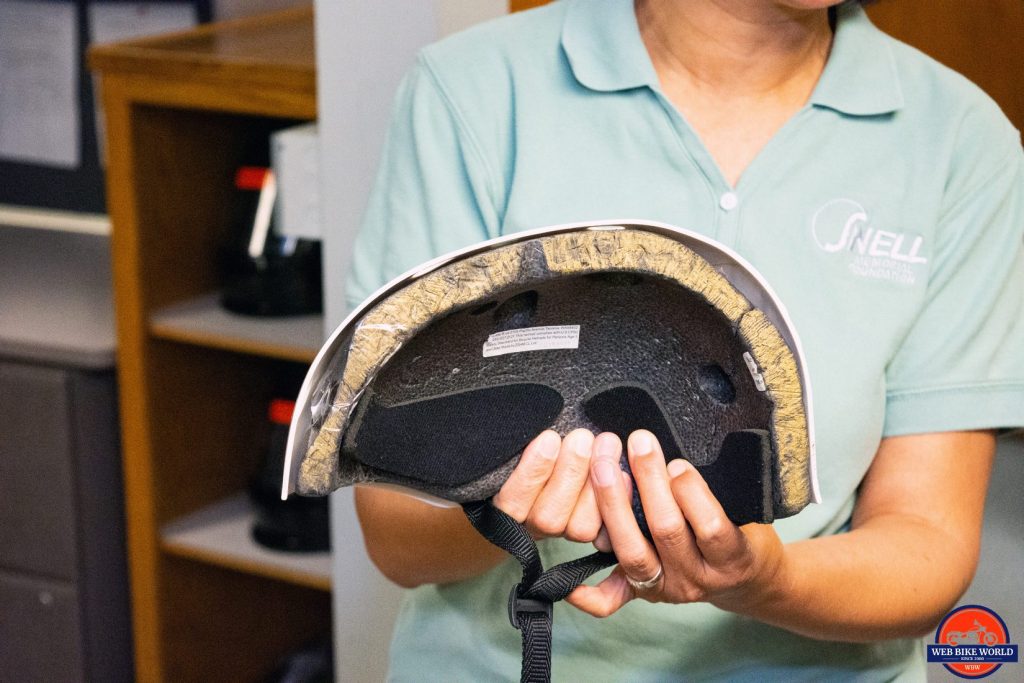
I can confidently say that my knowledge of helmet safety has greatly improved from this conversation alone, and honestly, we could have talked helmets all day. But we moved on and got to the really interesting stuff: testing (breaking) helmets to learn how the tests are performed, what they measure, and what they can indicate regarding the safety of the helmet.
Talk About Empowering Our Ability to Create
It’s one thing to read about what a helmet penetration test is and what it says about a helmet’s ability to protect your head….
Snell Helmet Penetration Test (Slow Motion GIF)
… and another thing entirely to drop a heavy spike on to the crown of a helmet and see the end the result for yourself.
We flew 1,500km To Empower Our Ability to Create… & Give Us the Ability to Do So From a Position of Earned Expertise
The world is fake. Fake news, fake reviews, fake views, fake nudes, deepfake videos, and fake everything else.
Learning from the experts so that you can speak to a subject and create with integrity? That’s the exact opposite.
And that’s the kind of content I want to create.
Time to Hit the Road
We left Snell just after 3:30. Having partaken in more than five hours of information overload, we were on our way back home. After a smooth check-in and quick pass through security at the Sacramento airport, we found a seat at a pub and ordered some suds.
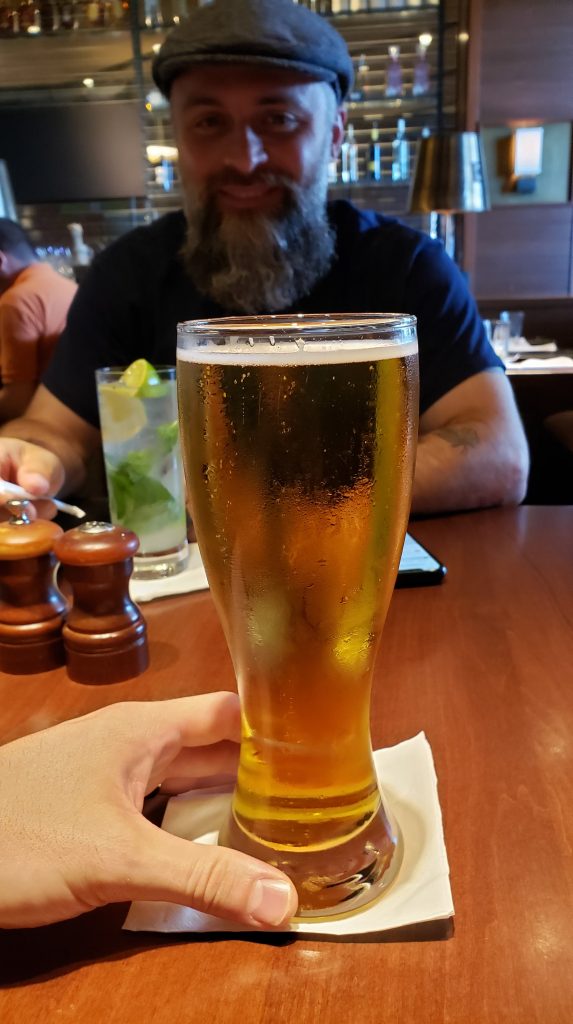
Jim wisely chose a gin and tonic, while I decided that a 20oz Stella was the beverage of the hour. It was followed by a 14 oz glass of the same, which dare I say, was even tastier than the first!

Shortly after six, our plane began to board. Fewer than 30 hours after we had departed Calgary, we were on our way back home.
Connecting Chaos
Somehow our flights wound up leaving a mere 45 minutes between landing in Seattle and our departure for Calgary. We were supposed to land at 8:25 and board at 8:35 (touching off from the gate at 9:15).
At 8:25, still 35,000 feet in the air, Jim and I began to get worried.
Okay, I began to get worried. Jim didn’t have a care in the world.
I called the flight attendant and asked her what my odds were of making my connection. She said that we should be good, but that she’d also make an announcement asking everyone to allow us to get off first.
The wheels touched down at 8:35, and by 8:44 we were at the gate with the doors open.
And, of course, everyone stood up and started deplaning. Jim and I, being in row 21, couldn’t help but let out a frustrated laugh.
It’s 8:55 by the time we finally get off of the plane, and Jim and I hit a full-blown sprint to our connecting gate (which has now been boarding for 20 minutes). We arrive at 8:58 and are relieved to find that the last of our seating group (group D for delicious donuts) boarding.
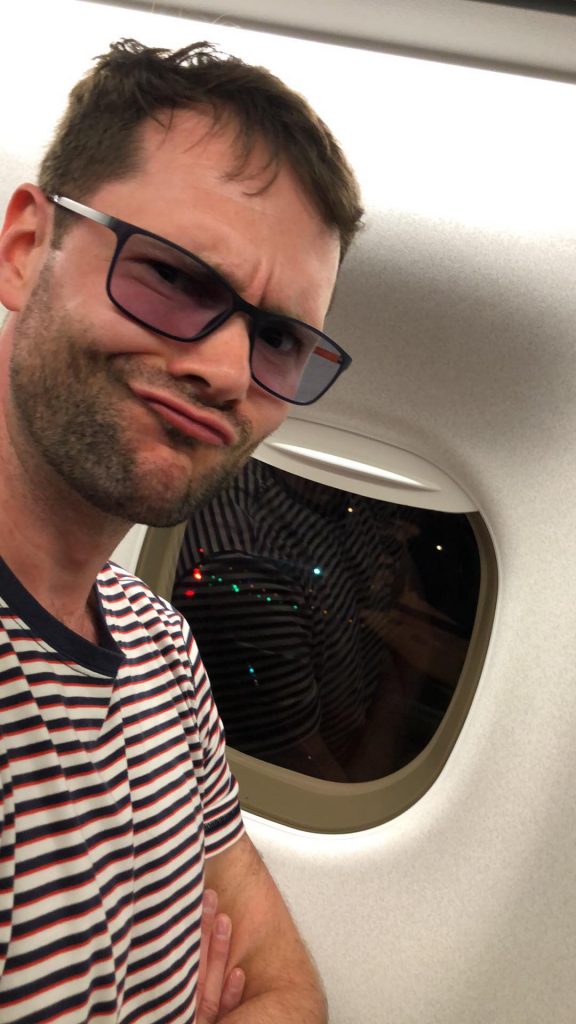
At 9:15 exactly, our plane pulls away from the gate and Jim and I let out a collective sigh of relief. We made it.
What This Trip Can Teach You About Content (& The Benefits From Those Learnings)
I’m preaching to the value of investing in content because I believe that powerful content makes a difference in people’s lives. It teaches us about the world, and about ourselves, and along the way, it also helps us connect with the voices that add meaning and value to our lives.
I believe that, in order to create that kind of content, you need to invest in understanding the experience you want to create. That doesn’t always mean hopping a flight and making a 3,000km round trip (but that’s definitely one way to do it).
Other ways you can do it:
- Generate unique and valuable information – Curate a survey, conduct some real-world tests, or present data that others can reference.
- Create a tool or solve a problem – Building elegant solutions to solve common problems is a great way to reach and add value to people.
- Share a great story – And fill it with something meaningful.
And much more.
Why You Should Do It
Before I step off my soapbox (shortly, I swear), I want to present a few ideas that show you why these investments are worth doing.
You Connect With Your Audience
Earning someone’s trust means you’ve also earned their recommendation. As you invest in great content, you’ll earn advocates that will introduce others to what you create.
You Can Influence an Industry
Building expertise puts real weight behind your voice, and that’s important if you want to become more influential in your industry. After all, would you follow the advice of someone with no experience or credibility?
You Grow as a Creator
While perhaps not as monetarily important, growing your abilities and perspective as a creator will help you remain interesting, engaging, and relevant to your audience. For me, this alone is worth the investment.
What I Learned (& Earned) Along the Way
wBW has been around since 2000 and has more than 2,500 pieces of content. We didn’t have to fly to Sacramento to write a piece on Snell. We chose to do it because what we learned from the trip has empowered us to create some incredible content.
Invest in your content and create authentic, value-add experiences.
- That’s the entire reason Jim and I went to California and back in two days.
- That’s why more than half of the Snell team spent their Friday talking to two motorcycle journalists about helmet safety.
- And that investment is what elevates and separates our ability to create content relative to many of our peers.
As we enter 2020, I am finding that expertise is in increasing demand as consumers look for people, products, and publications they can trust.
It’s investments like this that make me hopeful that I’ve made decisions that will help me earn that trust.
